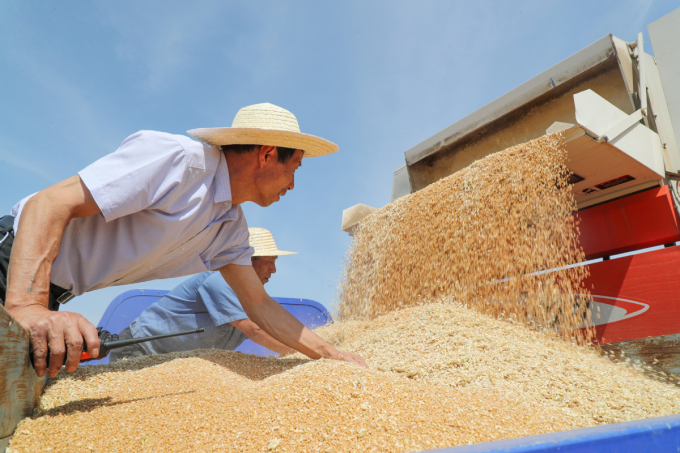November 28, 2025 | 03:47 GMT +7
November 28, 2025 | 03:47 GMT +7
Hotline: 0913.378.918
November 28, 2025 | 03:47 GMT +7
Hotline: 0913.378.918

Farmers involved in a wheat planting demonstration area in Pinglu county, Shanxi province, begin harvesting the summer wheat on 80 hectares of farmland. Photo: Chinadaily
Subsidies will be provided to crop-growing farmers who buy full-cost insurance or income insurance. The former covers various costs of agricultural production, including that of seeds, land and labor, and losses from natural disasters. And the later covers losses due to price and output fluctuations, according to the ministry.
The application scope of two types of agricultural insurance relating to planting rice, wheat and corn will be expanded to cover 500 counties with high crop yields in 13 major grain-producing provinces this year, including Sichuan, Liaoning and Jiangxi, the ministry said in a released statement earlier.
For the expanded insurance pilot, the central and local governments will increase fiscal subsidies toward premiums. Provincial governments will pay no lower than 25 percent. And 45 percent of premiums will be from the central government's budget for China's central, western and northeastern regions.
Vice-Minister of Finance Zou Jiayi said at a media conference on Tuesday that China's agricultural insurance premium subsidy policy is in line with international rules.
Most of the country's agricultural insurance premiums, which are measures to support the development of the agricultural industry, can be seen as the so-called "green box" policies under the framework of the World Trade Organization, Zou said.
Full-cost insurance, for example, is a type of natural disaster insurance, which can claim green box status. Income insurance, although it should belong to the "yellow box" measures according to WTO standards, only accounts for less than 0.2 percent of all agricultural subsidies. So both agricultural insurance premiums are fully in compliance with international rules, she explained.
For crops whose prices are basically determined by the market, such as corn, farmers can choose full-cost insurance or planting income insurance. For rice and wheat, whose prices are not fully liberalized, farmers are advised to choose full-cost insurance, the vice-minister said.
(Chinadaily)

(VAN) On November 27, in the meeting with Minister Tran Duc Thang, Mayor Yin Yong shared Beijing’s experience to improve environment and air quality.

(VAN) After 30 years, both sides identified strategic areas of cooperation: sustainable production, increasing coffee value and training for farmers.
/2025/11/27/4910-4-164708_294.jpg)
(VAN) On the afternoon of November 27 in Beijing, Minister of Agriculture and Environment Tran Duc Thang held a working session with several major Chinese enterprises operating in the agriculture and environment sector.

(VAN) The Department of Animal Health issued a provisional guideline requesting local authorities to increase surveillance, collect samples for testing, and conduct epidemiological investigations according to the established procedure.

(VAN) The United Nations recommends that Vietnam utilize data and artificial intelligence to enhance early disaster warnings and reduce GDP losses by 3.2% in the context of climate change.

(VAN) On the morning of November 27 in Beijing, Minister Tran Duc Thang and the Deputy Commissioner General of the General Administration of Customs of China signed a protocol on fresh jackfruit exports.

(VAN) As floodwaters recede, a vast network of irrigation works across eastern Gia Lai is emerging in a state of severe disrepair, with extensive damage demanding urgent restoration ahead of the 2025-2026 winter-spring cropping season.